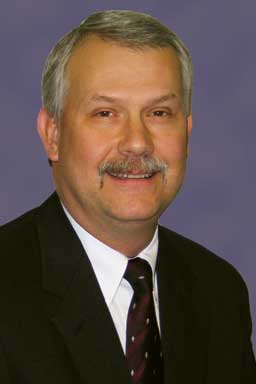From the Executive Director: Lessons from a reunion
I recently had the opportunity to attend the 30th reunion of my graduating class (1980) from Iowa State University College of Veterinary Medicine. Approximately 40 of my 121 classmates made it back to Ames. You all know the clichés about aging classmates and passage of time, so I will leave those to your own imagination.
It is always nice to catch up with those classmates I do not have an opportunity to see on a more regular basis. A lot can happen over the course of 30 years. Marriages, divorces, children, job changes, career changes, and health challenges all occur. In other words, life happens! It is all much more than can be summarized in an evening or two of conversation. More important than the recap of life’s events is the opportunity to reconnect with people with whom we shared a relatively intense educational experience.
This reunion also provided a perspective on the profession of veterinary medicine. The class of 1980 is a cross-section of the profession that demonstrates the diversity of careers arising from a common beginning. Ranging from solo food-animal practitioners to board-certified small-animal specialists, my classmates are spread along the spectrum of veterinary medicine. That spectrum has shifted over time as the food-animal contingent has shrunk. This was quite evident in the career changes undergone by a number of classmates who had been firmly entrenched in food-animal practice in the early years of their careers.
While there are quite a few classmates still involved in food-animal medicine, there are not as many as when we graduated. I have several classmates who are members of AASV and are in swine practice or areas related to pork production. Overall, however, we are not as numerous as we once were. We mirror the profession, as fewer veterinarians are in food-animal practice. This is and will continue to be a factor as food production comes under scrutiny and attack in the future, both from activists and from our veterinary colleagues.
For those of us still connected to food animals, it is vital that we not allow the profession to move away from the realities and necessities of production. This will require involvement at all levels of veterinary medicine. We need voices within organized veterinary medicine, including the American Veterinary Medical Association as well as state veterinary medical associations. We also need advocacy at an individual level, with colleagues who may not understand food-animal production. Finally, we need advocacy within our colleges of veterinary medicine.
To be effective in the state associations and one-on-one with colleagues from other areas of veterinary medicine requires individual efforts by swine veterinarians. Beginning in 2011, the AASV will be cooperating with the National Pork Board in training veterinary students and veterinarians in Operation Main Street. This training provides the skills and tools to explain pork production and swine practice to people outside of the industry. Materials will be provided for use in these interactions.
Reunions can remind us of the difficulty we may have in finding common ground with our colleagues, especially when 30 years have gone by. There was, however, a common theme among my classmates. It was discussing our children. It was plain to see the love and pride emerge as we talked about our kids. It was not so much about their accomplishments, but just that they are the most important legacy we will leave behind. Nothing bridges the gap of 30 years like talking about our children.
An important lesson can be gained from finding common ground with our colleagues from divergent areas of veterinary medicine. Caring about animals is a driving force for most veterinarians, and swine veterinarians are no different. Our focus must be on looking after the best interests of the pig within the boundaries of efficiently producing food in a safe and wholesome manner. It will be essential in our conversations about swine practice and pork production. Credibility is all about being believed to be heard.
I would be remiss if I did not mention that of 121 classmates, seven have died since we started as first-year students in 1976. One of those who is gone is our colleague and friend, Dr Monte McCaw. Monte was a long-time AASV member, practitioner, teacher, and researcher. We are diminished by his absence, but thankful for the time we had with him. The last lesson from the reunion is to love and appreciate those around you while you can. Let them know it – leave no doubts and no regrets behind!
